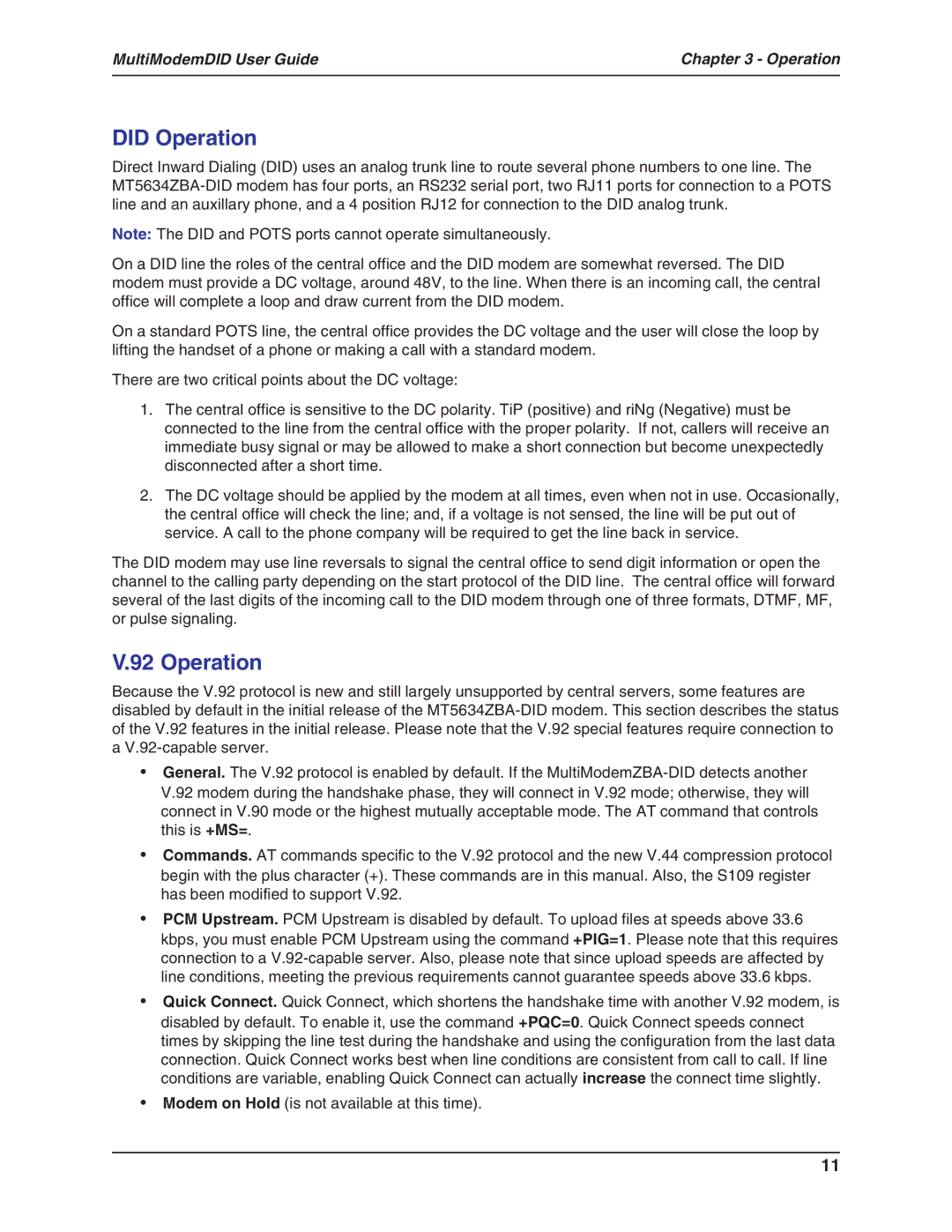MultiModemDID User Guide | Chapter 3 - Operation |
|
|
DID Operation
Direct Inward Dialing (DID) uses an analog trunk line to route several phone numbers to one line. The
Note: The DID and POTS ports cannot operate simultaneously.
On a DID line the roles of the central office and the DID modem are somewhat reversed. The DID modem must provide a DC voltage, around 48V, to the line. When there is an incoming call, the central office will complete a loop and draw current from the DID modem.
On a standard POTS line, the central office provides the DC voltage and the user will close the loop by lifting the handset of a phone or making a call with a standard modem.
There are two critical points about the DC voltage:
1.The central office is sensitive to the DC polarity. TiP (positive) and riNg (Negative) must be connected to the line from the central office with the proper polarity. If not, callers will receive an immediate busy signal or may be allowed to make a short connection but become unexpectedly disconnected after a short time.
2.The DC voltage should be applied by the modem at all times, even when not in use. Occasionally, the central office will check the line; and, if a voltage is not sensed, the line will be put out of service. A call to the phone company will be required to get the line back in service.
The DID modem may use line reversals to signal the central office to send digit information or open the channel to the calling party depending on the start protocol of the DID line. The central office will forward several of the last digits of the incoming call to the DID modem through one of three formats, DTMF, MF, or pulse signaling.
V.92 Operation
Because the V.92 protocol is new and still largely unsupported by central servers, some features are disabled by default in the initial release of the
a
•General. The V.92 protocol is enabled by default. If the
V.92 modem during the handshake phase, they will connect in V.92 mode; otherwise, they will connect in V.90 mode or the highest mutually acceptable mode. The AT command that controls this is +MS=.
•Commands. AT commands specific to the V.92 protocol and the new V.44 compression protocol begin with the plus character (+). These commands are in this manual. Also, the S109 register has been modified to support V.92.
•PCM Upstream. PCM Upstream is disabled by default. To upload files at speeds above 33.6 kbps, you must enable PCM Upstream using the command +PIG=1. Please note that this requires connection to a
•Quick Connect. Quick Connect, which shortens the handshake time with another V.92 modem, is disabled by default. To enable it, use the command +PQC=0. Quick Connect speeds connect times by skipping the line test during the handshake and using the configuration from the last data connection. Quick Connect works best when line conditions are consistent from call to call. If line conditions are variable, enabling Quick Connect can actually increase the connect time slightly.
•Modem on Hold (is not available at this time).
11
